After a couple of days staying on Santorini it was time for something a bit more relaxed.
Naxos, had never really been on my radar. It is the largest island in the Cyclades and has been popular with Putney Travel clients for years so we decided to have an early summer break and to combine it with Santorini in a short island-hopping holiday. There are no international flights to Naxos, so it gets less overseas visitors – the only way there is really a ferry from Santorini or Mykonos (or another Cycladic Island)
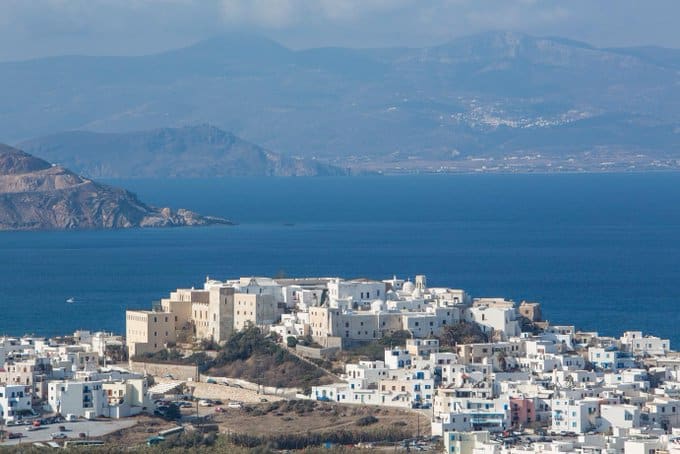
I am now a firm Naxos convert and not sure why I didn’t discover it sooner. The guidebook says that from the moment the ferry draws in to the port at Naxos town you realise this is a very special place. It really is. Naxos town is beautiful. The heart of the town has the same Cyclades architecture of low white buildings with blue shutters and the odd blue tinged roof. In addition, as a famed marble mining island, the streets are paved with white marble slabs which gives it a feeling of elegance distinguishing it from other island’s main towns. Behind the pretty port front, with its restaurants and sailing boats, the old town stretches back in several ascending layers of winding narrow paths & lanes with tasteful and quirky shops, bars and restaurants. It is an enchanting place to explore at night. There is an old market street which is great for shopping and rising above is the Kastro – the walled Venetian old town, atmospheric and fascinating to explore with the old cathedral and archaeological museum (with plenty of distinctive Cycladic statuary) at its heart. From their citadel here the Venetian rulers held sway over the Duchy of the Aegean for 300 years (from 1207).


A few hundred yards away from the town, across an ancient causeway, protecting the harbour from the north winds, are the remains of the ancient Temple of Apollo on a small promontory – the Portara – an imposing gate like structure where tourists gather at sunset to watch the sun set behind it.

We stayed on the edge of Naxos town (about 10 mins walk from the centre) at the Galaxy Hotel set just back from the beach and with magnificent sea views and out towards Paros. It was really perfect – with a pretty pool, comfortable rooms, excellent breakfast and really personal service. It is a perennial favourite and you need to book early to get in here.

We could stroll down to the gorgeous St George’s beach in a couple of minutes and hire front row umbrellas and sun beds (€25 for two) with the Med gently lapping in front of us. This was a truly outstanding beach for a town, or in fact for anywhere. A golden semi-circle of sand around crystal blue waters with a handful of tasteful beach clubs offering umbrellas and sun beds and providing excellent lunch and drinks and very friendly and attentive service. The gently sloping sands are perfect for toddles and small children too – bearing in mind that it is hard to find proper sand on many Greek islands.
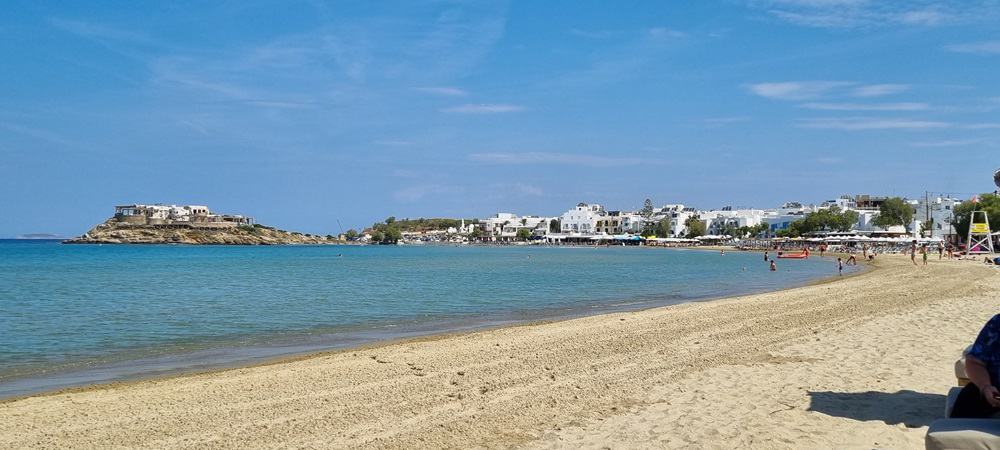
It was hard to tear ourselves away at the end of the day and we found ourselves drawn back later to one of the charming beach bars (our favourite was Vamos). Here you could sit at tables on the sand and watch the sun go down, over the island of Paros, for the most chilled low-key sundowner ever.

From there we would wander in to town and choose from the amazing selection of local restaurants – good food is everywhere on Naxos. It is a highly agricultural island offering an amazing choice of fish, meat and Naxian cheese as well as their vegetables – especially the potatoes. At Menu Menu we ate the best lamb chops from the restaurant’s own farm and amazing grilled octopus with fava beans as well as the best prawn saganaki I have ever tasted. At Scirocco we ate an amazing fish grill with star of the show calamari and the most amazing fried cheese saganaki. At Meze Meze we ate the islands famed fish salad and their local grilled fish. At the Sarris Taverna, famed for its fish, we had the wonderful fish soup and their fresh sea bass and fried calamari. Oh and the potatoes! How is it possible to rave about potatoes you ask. But Naxian potatoes are truly the most delicious you have ever tasted- in whatever form you try them – chipped, sautéed, or in potato salad. Every meal ended with a complimentary dessert and more often than not a glass of Kitron, the island’s liqueur which is very moreish. We left not having tried as many of the restaurants as we wanted – they are all good value and service is charmingly attentive. The owner of the restaurant usually takes your order and recommend the house specialities.
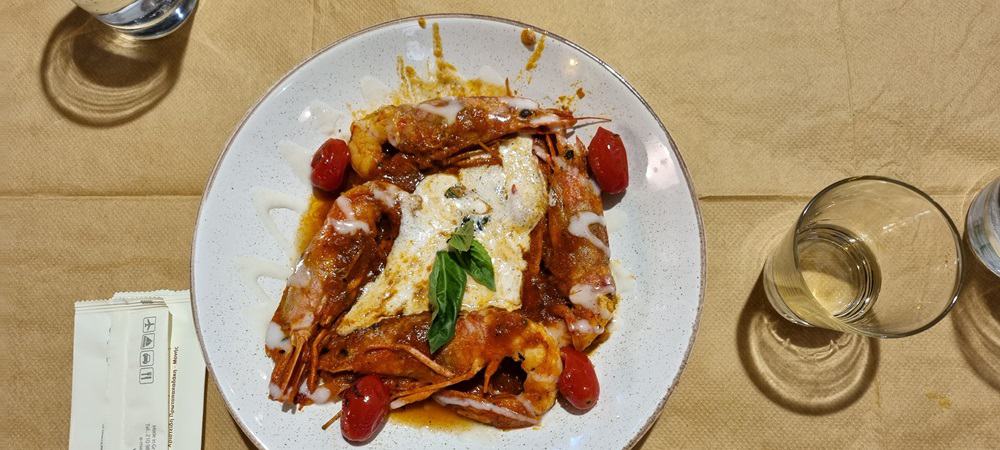

Getting out and exploring with a car was easy and well worth it. 10 minutes’ drive from Naxos town are some other spectacular beach areas: Prokopio beach and Plaka beach, the latter stretching for kilometres, which are rightly famed and offer a more remote setting with access via a taxi or car ride to the town. The further south you go the less developed and remote it becomes.
There is much more to the island than sandy beaches, gorgeous local food and lovely Naxos Town. Head inland though for the lush mountain valleys, dramatic high peaks (at 1000m Mt Zas is the highest point in the Cyclades – allegedly the home of Zeus while he was growing up), wide plains and attractive hill villages. The Tragea district here, a high mountain valley, is the only part of the Cyclades to regularly get snow in winter.

Of the classical remains there are two main locations. Flerio has ancient marble quarries from the 7th C BC and there are two famous Kouroi (giant, 5m, marble reclining figures) that were left behind in situ, perhaps due to a flaw in the marble. The other is the Sanctuary of Demeter from 530BC and the first temple ever wholly constructed from marble. In a wonderful peaceful location looking out across the wheat fields to the distant sea, it is fitting that the goddess of Harvests was feted on the bountiful island. Slightly more recent, but still probably the oldest church in the Cyclades, is the tiny 6th century Panayia Dhrosiani. It has perhaps the earliest frescoes in the whole of Greece glimpsed in it’s tiny beehive like chapels.


We visited the little village of Halki with its cute shops and the old Kitron distillery which you can visit and still produces the liqueur today in their antique stills, and the largest village Filoti with shady trees around the square. Our favourite village was Aperathou a typical white village on the side of the mountain with breath-taking views in both directions over the sea and the valleys. The hilly village was beautifully preserved and a delight to wander through its lanes and alleyways It has really interesting shops (including a rather remarkable bookshop) and pretty restaurants making you spoilt for choice as to where to stop for lunch.

The driving was easy and the roads empty so it is a joy to explore. We left still wanting to do more – it would have been good to get over to some of the smaller harbours & beaches on the east coast and in particular we would love to have done boat trips to some of the lesser Cyclades islands, such as Iraklia & Koufonissi, which are so accessible from here. Naxos works well on its own, bearing in mind you cannot fly there directly from the UK, or in combination with other Cycladic islands on an island-hopping holiday.
I don’t think I can sing the praises of Naxos enough – go there!






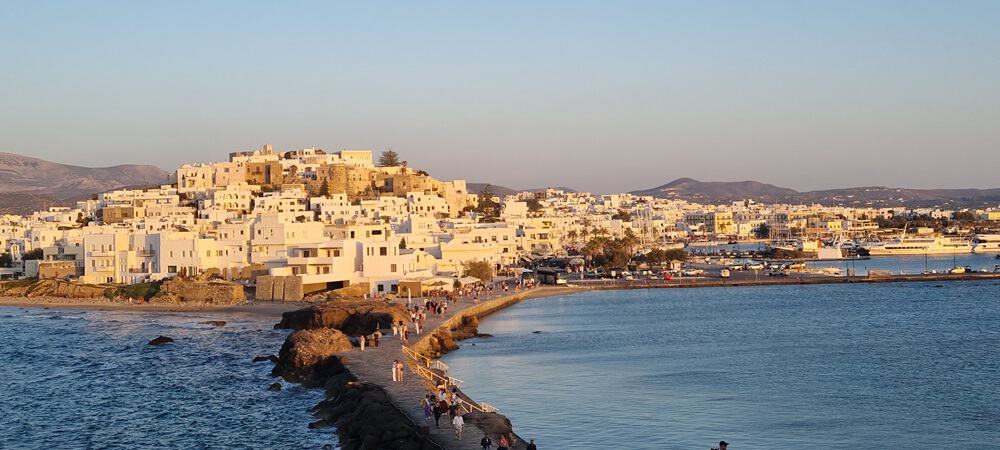


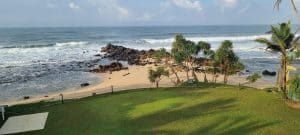

 by TMS
by TMS